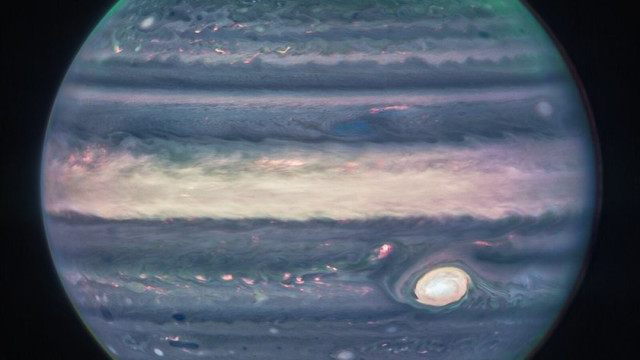While NASA's James Webb Space Telescope (JWST) was originally rumored to reveal the farthest horizons of the universe—and it certainly has—some of the observatory's most stunning images are actually of our own solar system.
With its gilded beehive of mirrors and infrared equipment such as the Near Infrared Camera (NIRCam), the James Webb Space Telescope has reintroduced us to the stunning place we call home, making us feel like we're seeing our planetary neighbors for the first time. It even offered us a moving view of Neptune's fragile rings - something that hasn't been done in 30 years.
But scientists announced that in addition to offering us a new look at the Solar System, JWST's images of our cosmic neighborhood are also providing us with new data about a planet we thought we knew pretty well: Jupiter.
The pictures the observatory took of the gas giant last year were able to show us completely new things about its moons, atmosphere and rings. (Yes, Jupiter has rings too!) Basically, after looking at the images that JWST took of Jupiter in 2022, a team of researchers realized that the planet has a high-speed jet stream that extends more than 4,800 km and moves with a speed of about 515 km/h.
"This completely surprised us," said Ricardo Weso of the University of the Basque Country in Bilbao, Spain, and lead author of the paper describing the findings. "It's amazing to me that after years of tracking Jupiter's clouds and winds from numerous observatories, we still have a lot to learn," Lee Fletcher of the University of Leicester, United Kingdom, a participant in the new study, said in the statement.
What could this mean?
According to the team, Jupiter's newly discovered jet stream, which moves at about twice the speed of a Category 5 hurricane on Earth and is located just above the equator, may shed some light on the planet's turbulent atmosphere. In fact, all these pictures of Jupiter from 2022 can help researchers draw conclusions about what's going on in the apricot-peach orb's sky.
"What we've always seen as fuzzy mists in Jupiter's atmosphere now look like clear features that we can follow along with the planet's rapid rotation," says Hueso.
Jupiter is known for its extreme weather conditions; you may have heard of Jupiter's Great Red Spot, for example, which is an endless, massive storm so huge that it's visible from our vantage point on Earth with a plain old optical telescope. And, importantly for scientific research, Jupiter's atmosphere is multi-layered, like Earth's. This means that wind speeds in the various layers likely contribute to the giant planet's turbulent climate.
The extremely fast jet itself is located about 40 km above the planet's clouds.
"Jupiter has a complex but repeating pattern of winds and temperatures in its equatorial stratosphere, high above the cloud and haze winds measured at these wavelengths," says Fletcher. "If the strength of this new jet is related to this fluctuating stratospheric pattern, we can expect the jet to vary significantly over the next two to four years. It will be really exciting to test this theory in the coming years." /BGNES







